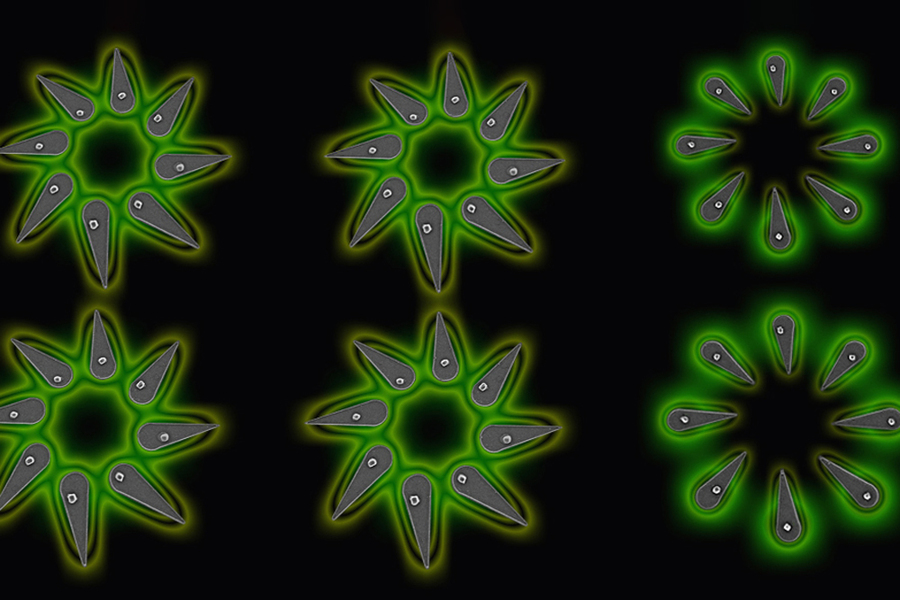MIT researchers develop a nano-LED growth technique for XR applications
2023年7月11日 – 麻省理工学院(MIT) researchers have developed a new technique for integrating halide perovskite nanocrystals into nanoscale devices. The technique enables precise growth of nanoscale light-emitting diodes (nano-LEDs), which may have potential applications in augmented reality (AR) and virtual reality (VR) displays.
Halide perovskites are a class of materials with outstanding optoelectronic properties, making them ideal for high-performance solar cells, lasers, and light-emitting diodes (LEDs).
To date, integrating these materials at the nanoscale has been a challenge due to the fragility of halide perovskites and their susceptibility to damage during conventional fabrication. To overcome this hurdle, the MIT researchers devised a method to precisely grow individual halide perovskite nanocrystals in situ and control their position within 50 nanometers (a sheet of paper is 100,000 nanometers thick).

According to MIT, this innovative new method allows precise control not only of the nanocrystal's position, but also its size, which directly affects its properties and performance. By growing the material locally at the desired properties, damage that can be caused by traditional photolithographic patterning steps is eliminated.
MIT notes that this technique is scalable, flexible, and compatible with conventional fabrication steps, and is suitable for integrating nanocrystals into functional nanoscale devices. The researchers successfully used this method to create arrays of nanoscale LEDs (nano-LEDs) that emit light when electrically activated. These arrays may have potential applications in optical communications, computing, lensless microscopy, quantum light sources, and high-density, high-resolution displays for augmented and virtual reality.
The researchers' approach was to create a nanoscale template containing small holes for the chemical process of crystal growth. By modifying the template surface and the interior of the pores, the researchers were able to control a property known as "wettability," ensuring that solutions containing the perovskite material were confined to the pores.
The shape of these pores plays a crucial role in determining the nanocrystal orientation. By changing the shape of the holes, the researchers were able to tune the nanoscale forces to achieve preferential placement of the crystals at desired locations. In addition, they found that by tuning the size of the pores, the size of the crystals could be precisely controlled.
Farnaz Niroui, EE Landsman Career Development Assistant Professor of Electrical Engineering and Computer Science at MIT, a member of the Research Laboratory of Electronics (RLE), and senior author of the study, said: "As our study demonstrates, it is critical to develop new engineering frameworks for the integration of nanomaterials into functional nanodevices. By pushing the traditional boundaries of nanofabrication, materials engineering, and device design, these techniques can allow us to manipulate matter at extreme nanoscale dimensions, helping us realize non-traditional device platforms that address emerging technological needs."
Published in Nature Communications, the interdisciplinary team included researchers in electrical engineering, computer science and chemical engineering. The work was supported in part by the National Science Foundation and the MIT Center for Quantum Engineering.
MIT says the research team plans to further explore other applications of these tiny light sources and test the limits of miniaturization to efficiently incorporate them into quantum systems. In addition to nanoscale light sources, the process opens up other opportunities for developing on-chip nanodevices based on halide perovskites.
Related posts




